5 Yoga Poses to Strengthen the Back Muscles and Relieve Pain
Simple & effective yoga poses to help relieve back pain and strengthen your muscles. Try these poses if you have severe back pain or a tight back!
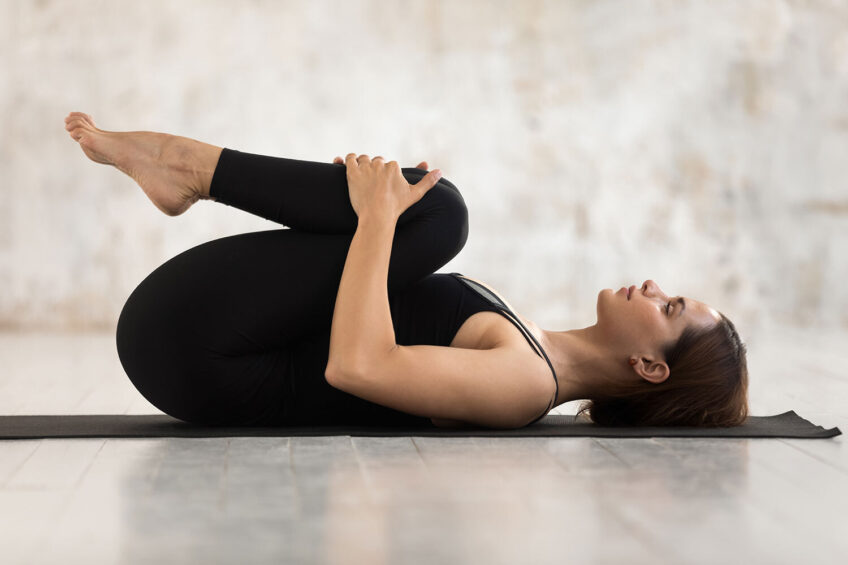
As our everyday lives have evolved, we’re much more likely to spend our days sitting in front of a computer than on our feet. This has a seriously detrimental effect on our skeletal muscles and posture.
Sitting at a desk, spending hours in front of the computer, and driving in the car all contribute to a tight, locked chest, neck, shoulders, and back.
To reverse this situation for optimum balance and health, people are turning to yoga, with a recent study showing that over 20 million Americans practice it.
Strong evidence supports the idea that yoga helps relieve pain in both the short and the long term.
Several yoga poses will help to strengthen and stretch skeletal muscles that have become weak and tight over time. Yoga can be targeted to increase strength in specific tissues, and muscle strength improves by holding the poses and incorporating various movements.
My personal experience is that many yoga positions gently strengthen back muscles, which has been an essential component in helping me correct and maintain proper posture and movement.
Along with helping with low-back pain, yoga helps to make muscles more flexible and increase their range of motion.
The most basic yoga post to help alleviate back pain is merely bringing your knees to your chest. Or in Sanskrit, Apanasana.
Here are a few more simple back-strengthening yoga poses that I find help me to naturally and effectively fight back pain and discomfort as well as reversing years of repetitive conditioning.
Of course, you want to ensure you have a good yoga mat.
1. Cat and Cow Pose (Bitilasana Marjaryasana)
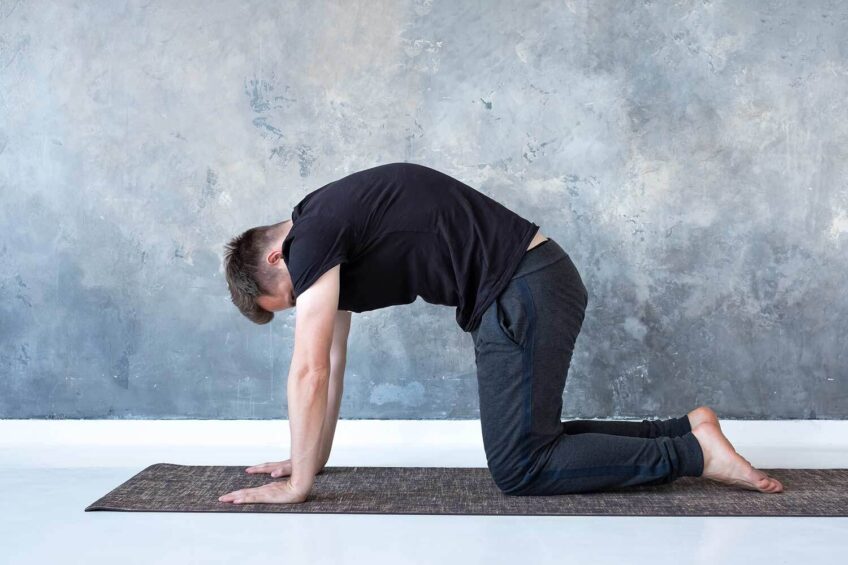
I like to start with cat and cow pose (and sometimes, it’s all I have time for). Cat and Cow Pose is a simple movement that stretches the hips (which supports back strength) and the entire spine. This can be done anytime, anywhere, to build up your back’s flexibility.
As with any yoga movement, move slowly and deliberately without forcing your muscles if you feel uncomfortable. Don’t rush the exercise, and you’ll soon start to feel your flexibility improve.
Instructions:
- Begin on your hands and knees, looking down at the ground so that your neck and spine are aligned.
- Inhale, lifting your chest and tailbone and pushing your abdomen down, look up towards the ceiling (Cow).
- Then exhale, rounding your back, pressing through the shoulder blades, and dropping your head (Cat).
- Repeat the movement, timing it according to the rhythm of your breath. Be conscious of feeling your muscles as you flow from one pose to the other.
- Repeat 8-15 times.
2. Supine Twist (Supta Matsyendrasana)
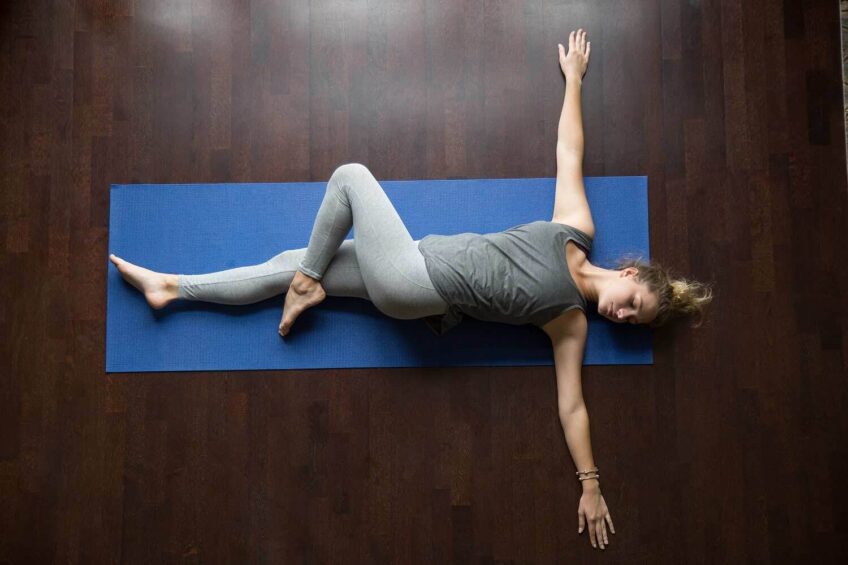
This is an excellent exercise to relieve tension in the back and neck. Working with gravity, you introduce a twist to the spine as you lie down and relax your back.
This spinal twist will often provide a spinal adjustment, and you might hear a “pop” – this is normal. An added benefit is this exercise helps with digestion.
Instructions:
- Lie down on your back and place your arms perpendicular to your body to make a T-shape on the floor, then bring your knees half-way towards your chest.
- Slowly lower both knees to the left, keeping the neck neutral or turning it to the right to increase the stretch.
- Work on keeping both shoulders on the floor; if you notice your top knee lifting, place a block between your knees.
- Keep the stretch for 1 to 4 minutes before repeating on the other side.
3. Sphinx Pose (Salamba Bhujangasana)
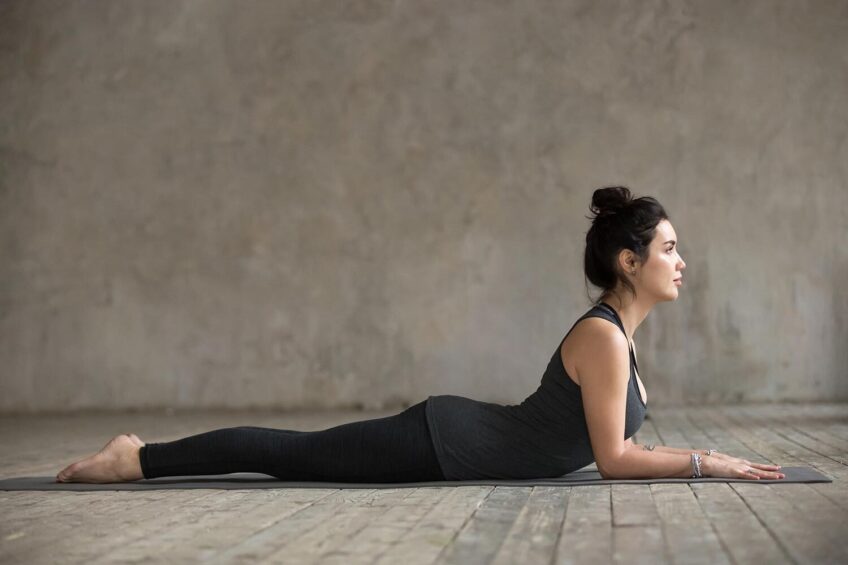
Because many of us sit often, the natural curve of our lower back tends to flatten, leading to pain and stiffness. The Sphinx pose helps tone the spine and stimulate the natural curvature of the lower back.
Instructions:
- Lie on your stomach with your feet hip-width apart, then bring your elbows under your shoulders so your head is off the ground.
- Hold the pose for between 1 and 3 minutes, then release the pose by lowering your upper body to the floor.
- Relax and remain lying on the floor for as long as you need, then come to a child pose for a minute.
If there is too much pressure on your lower back when you are in the Sphinx Pose, you can ease it by moving your elbows forward.
4. Thread the Needle Pose (Parsva Balasana)
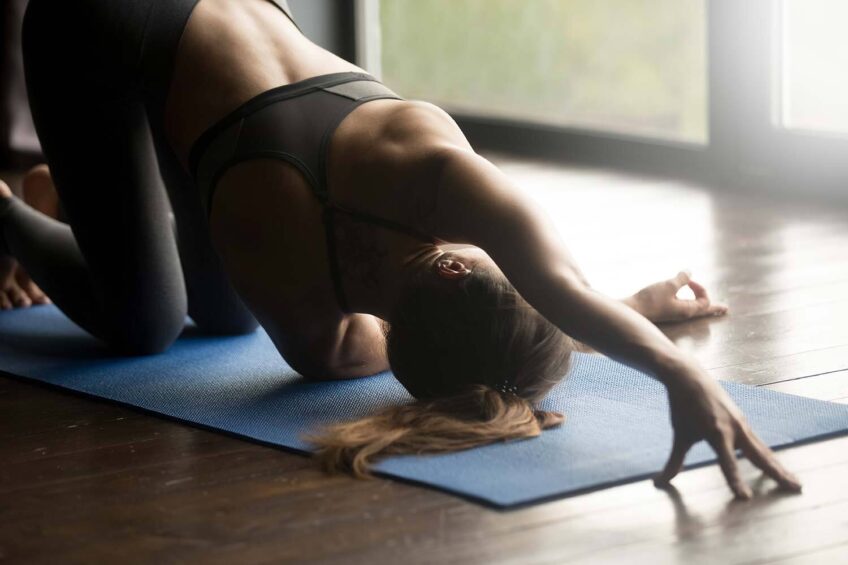
If your hips are tight, this will impact your back. The movement you need will tend to come from the back as it compensates for the immobility of the hips.
Opening up the hips and hamstrings alleviates lower back pain and stress and gives the body a better range of motion.
Instructions:
- Start by lying on the floor and bringing the soles of your feet on the ground, hip-distance apart.
- Place your right ankle on your left thigh, keeping your foot flexed.
- Take your right arm in between the space of the legs and your left arm on the outside of your left thigh.
- Interlace your fingers behind your knee (or on top of your skin), keeping your shoulders and back relaxed.
- Hold the pose for 1 to 3 minutes, then change sides.
5. Downward Facing Dog (Adho Mukha Shvanasana)
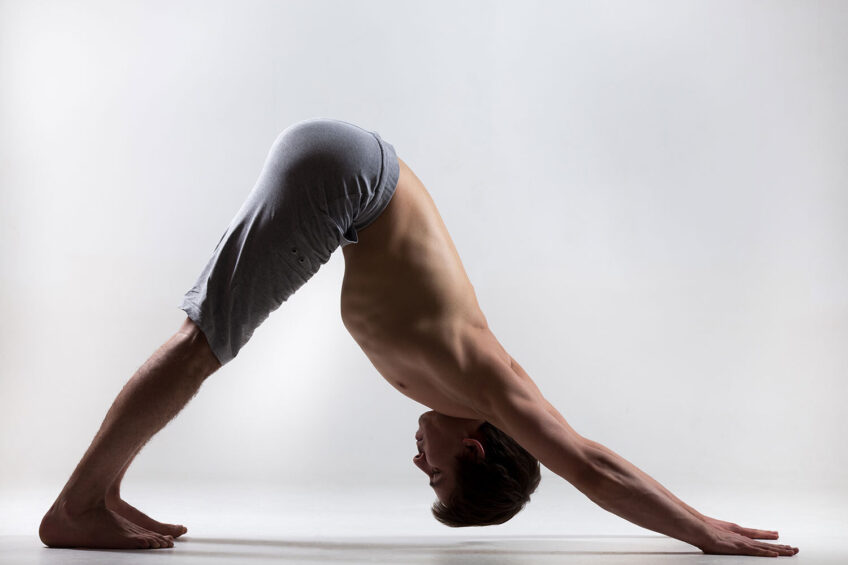
One of the most well-known yoga poses, Downward Facing Dog, lengthens and decompresses the entire spine and stretches the hamstrings, which helps relieve lower back issues.
Instructions:
- Starting on your hands and knees, tuck your toes under and rise into the down-dog pose.
- Keep your knees bent and back straight with your tailbone towards the ceiling.
- Slowly straighten one leg at a time and push your heel towards the ground.
- Draw your shoulder blades towards the spine, actively lowering them and rotating your upper arms outwards.
- Hold the pose for 5 breaths.
What Do I Think?
As I’ve gotten older, I’ve definitely begun to feel more of the effects of my daily desk-bound life. I know that I sit for many hours of the day and don’t move around nearly enough to offset the damage my inactivity is doing to my body.
I started yoga about 7 years ago, and it’s quickly become a non-negotiable daily routine. Yoga strengthens my core and improves my posture.
Yoga has helped me be more mindful of sitting less, moving around more, and stretching when I have a moment – all of which contribute to a stronger, pain-free back and upper shoulders.
I join a class a couple of times a week, but I also make at least 10-15 minutes daily to do simple, gentle stretches to build flexibility and strength.
The five exercises above are my top go-to poses if my back feels tight or sore. They’re specifically for building back strength, but as with any yoga pose, they work in many different areas to build whole-body strength and flexibility.
Jessie Clayton
Jessie Clayton is a highly regarded yoga instructor (RYT 500) and certified nutritionist dedicated to guiding individuals on their journey to holistic well-being, with over 5 years of experience in yoga and nutrition. Jessie is an avid Christ follower and passionate advocate for the harmonious integration of mind, body, and spirit.










